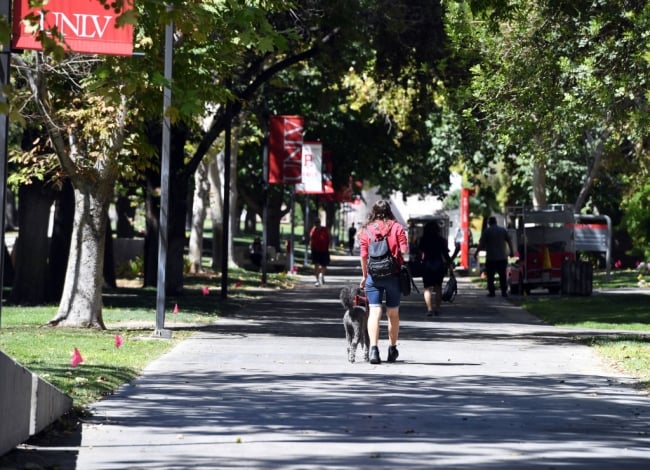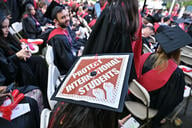You have /5 articles left.
Sign up for a free account or log in.

This year, the University of Nevada, Las Vegas will survey faculty and staff to understand the number of minority-serving initiatives taking place on campus and how they benefit students.
Ethan Miller/Getty Images
Starting this summer, the University of Nevada, Las Vegas will administer a survey to faculty, staff and administrators to collect data on existing services and resources on campus that support the university’s mission as a Minority-Serving Institution.
The survey is one piece of a larger strategy to promote student success among underrepresented student groups, but it serves as a launching point in identifying future areas of focus and charting engagement and changes over time.;
The background: UNLV is a Minority-Serving Institution (MSI), Hispanic-Serving Institution (HIS) and Asian American and Native American Pacific Islander-Serving Institution (AANAPISI). In 2019, administrators created a MSI task force—involving faculty, staff and other leaders—to design and maintain support systems to facilitate student success, and one of the subcommittees is focused on data and assessment.
At present, UNLV has a broad range of programs supporting MSI learners, including in academic support, financial aid, cultural enrichment and professional development. However, the university lacks standardized data across the different offerings.
“UNLV aspires to achieve a more robust data culture, particularly concerning student support initiatives, emphasizing the use of empirical evidence to inform decisions, policies and practices,” explains Chris L. Heavey, the university’s executive vice president and provost.
The MSI initiatives survey was designed to gauge different initiatives’ purposes, services and activities as well as reach, intensity and impact on the campus community, according to survey FAQs. The survey also serves as a tool to collect standardized data across efforts, Heavey says.
Included among the community members represented in the various initiatives are academically underprepared students, exclusively online learners, food-insecure individuals, nontraditional learners, transfer students, veterans, undocumented students, disabled students, first-generation learners, international students, LGBTQ+ students, BIPOC learners and foster youth, among others.
How it works: The survey will be administered first this June and then every June following evaluating initiatives operating throughout that academic calendar year.
Staff or faculty members who oversee an initiative related to one of the listed population groups will complete the survey annually for each initiative. Survey questions ask about program objectives, measures, student participation, community engagement services and funding sources, plus other topics.
The survey takes less than an hour but requires the respondent to provide specific data from those who participate in the initiative, so UNLV officials recommend collecting data at least ten months before the survey opens.
What’s next: After the first survey, campus leaders hope to establish a baseline understanding of the scope and impact of initiatives and identify how populations are being served or underserved, identifying trends and tailoring interventions as needed, Heavey says. “This approach will ensure that resources are allocated efficiently and that strategies are continuously refined to enhance support services and student outcomes.”
A primary challenge in delivering the survey is ensuring participation and accurate data collection.
“Given the diverse and decentralized nature of these efforts, achieving uniformity in data reporting and overcoming logistical hurdles to gather a complete and nuanced picture of the university’s efforts require meticulous planning, coordination and engagement,” Heavey says.
In the future, UNLV plans to use survey findings to inform decision-making, program development and improvement processes, as well as to gauge change over time and identify student needs as they evolve.
How is your institution using data to measure student success? Tell us about it.




